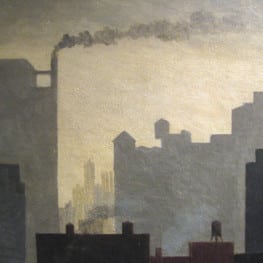Edward Bruce
1879-1943
Born in Dover Plains, New York, Edward Bright Bruce began painting at the age of fourteen, but did not initially pursue art as his primary career. Instead, he earned a law degree from Columbia University, and became a successful lawyer and businessman whose work in foreign trade and banking took him to East Asia for many years. Nevertheless, his passion for art retained an important place in his life. Enraptured by the traditional landscape paintings of China, he subsequently amassed an important collection of early Chinese hand and hanging scrolls. These works were donated in 1923 to Harvard’s Fogg Art Museum, forming the core of its holdings in that area.
In spite of the demands of his career, Bruce continued to paint in his free time. In 1921, several of his works were exhibited in a group show at the prominent Bourgeois Galleries in New York. Two years later, at the age of forty-four, he made the decision to devote his life entirely to art by moving to Italy to study and paint full-time. He lived there for six years, all the while creating luminous depictions of the Italian countryside that were well-received at exhibitions in both the United States and France. Rendered in a simplified manner, his landscapes possess a modern sensibility in their reconfiguration of the pictorial space but also convey a sense of the sublime.
A man of innovative vision, Bruce cemented his historical importance in the art world during the Great Depression by proposing and then directing the federal Public Works Art project. The program put unemployed artists to work decorating newly constructed government buildings. Though it lasted only a year, Bruce’s plan established the precedent for the better-known Federal Art Project.

